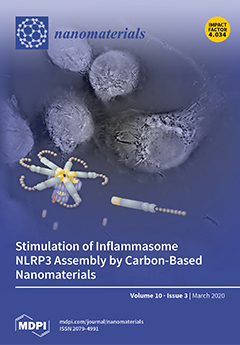MnO
2-deposited lignin-based carbon fiber (MnO
2-LCF) mats are fabricated for supercapacitor applications. LCF mats are produced from alkali lignin via electrospinning followed by stabilization and carbonization. The carbonization process is carried out at 800, 900, and 1000 °C, and the
[...] Read more.
MnO
2-deposited lignin-based carbon fiber (MnO
2-LCF) mats are fabricated for supercapacitor applications. LCF mats are produced from alkali lignin via electrospinning followed by stabilization and carbonization. The carbonization process is carried out at 800, 900, and 1000 °C, and the corresponding mats are denoted as MnO
2-LCF-800, MnO
2-LCF-900, and MnO
2-LCF-1000, respectively. The LCF mats are immersed in a KMnO
4 solution at room temperature for 72 h to obtain MnO
2-LCF mats. The scanning electron microscopy and X-ray diffraction analysis confirm the deposition of MnO
2 on the LCFs. The Brunauer–Emmett–Teller analysis, X-ray spectroscopy, and Raman spectroscopy reveal that MnO
2-LCF-800 mat possesses a large number of mesopores and Mn vacancies as compared to MnO
2-LCF-900 mat and MnO
2-LCF-1000 mat. Consequently, MnO
2-LCF-800 mat possesses the best electrochemical properties with a specific capacitance of 131.28 F∙g
−1, an energy density of 14.77 Wh∙kg
−1, and a power density of 135.01 W∙kg
−1 at a specific current of 0.3 A∙g
−1. Hence, MnO
2-LCF-800 mat shows high potential to be used as a high-performance supercapacitor.
Full article






